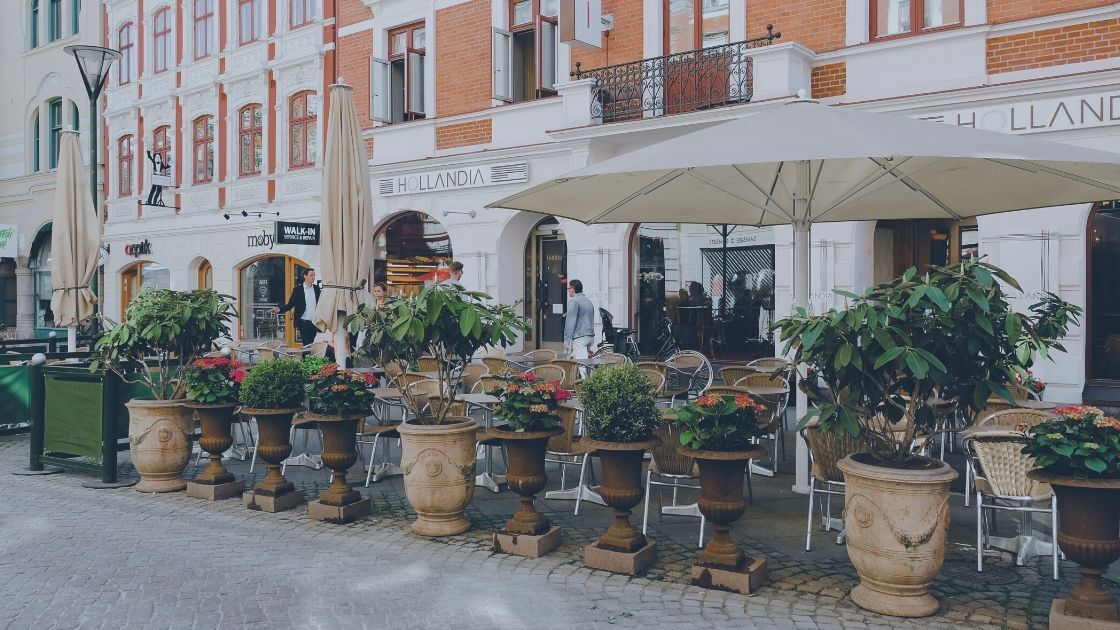Today is a sunny and windy day in the south of Sweden.
I’ve been spending several hours outside, more than I did in months, having lunch in the park with a friend. Between rows of flowers, a few women look like they’re having a baby shower, eating cake and waving balloons and presents. The mum-to-be has the privilege of sitting on a foldable camping chair, while the others are sitting around, in a big circle, on picnic blankets.
This might sound weird, incredible or even downright irresponsible to people living outside of Sweden. And yet, that’s normal here. After weeks of social distancing, rarely going further than my neighbourhood and avoiding people and public spaces, being out gives me a sense of freedom.
This is a confused freedom, nonetheless, as I’m constantly aware and working out what feels safe and what doesn’t. I’m still careful about not touching my face, applying disinfectant on my hands regularly and keeping my distance from others. The outside tables at cafes and restaurants are pretty full, yet the space between tables has increased. The Swedish authorities perform inspections and will close down businesses that don’t respect the social distancing guidelines for their customers.
The unemployment rate is high as a lot of small businesses are closing. The ones still running do so with reduced hours and less staff.
There’re many reasons why Sweden’s approach of not instituting a forced lockdown and relying instead on the individual sense of responsibility works but might not in other countries. Sweden has a small population blessed with so much natural space, that in many areas it’s easy to be out and keep a distance even when it’s not a pandemic. There’s an implicit trust that the state is taking care of its citizens, and the majority of the population trusts the authorities and the medical system to handle what’s happening. A lot of people live in single households. The country is moving towards becoming cash free, and the technological infrastructure makes it possible to work, shop, bank and do your tax reporting from afar.
Even if Sweden hasn’t been as strict as other countries with lockdown restrictions, a walk around the city will show you that plenty of measures have been taken. Events have been cancelled, including the much-awaited Walpurgis spring celebrations that were supposed to take place at the end of April. Lunch buffets switched to table service. The post office staff are now working from behind plastic windows. Busses have stopped opening the doors next to the drivers. Offices look empty. At my local medical center, drop-ins have been cancelled, and medical staff await at the door, screening the people that come in for appointments if they have any cold symptoms (I almost got in trouble for clearing my throat to speak). A recent poll says that the majority of Swedes have reduced their physical contact.
The population of Sweden showed up to support the health system in different ways:
Medical staff have switched roles in hospitals to help deal with the patients, and the ICU capacity to receive patients has doubled. Students got involved in sewing masks and making disinfectants. A lot of people volunteered in their neighbourhoods to do the shopping for the elderly. After getting many negative reactions in the media, the Swedish approach is now receiving some approval due to its model of “partnership with the population”. As other countries are preparing to leave lockdown, they’re looking at Sweden’s way for solutions to deal with the pandemic.
Maybe the most controversial decision has been to keep the schools open for those under 16 (older students have long been taking classes online). A friend, mother of two, explained the advantages of being able to take children to school during the pandemic:
“Neither our children or us are in a vulnerable category, and we are social-distancing so we’re making sure we’re not passing the virus to anybody who is in the risk categories. This way, my husband and I, both working from home, can keep doing so and have a sense of financial security even during these troubled times. It’s also hard to imagine how the children’s lives would be without social contact.”
There are obvious shortcomings to Sweden’s approach: parents within risk groups are still obliged by the social services to send their children to school, thus increasing the risk of the children bringing the virus home. Medical and elderly care staff have been affected by the virus, as the protective measures proved insufficient. There’s a high rate of elderly deaths in care homes. All countries are figuring it out and there’s no perfect solution to this.
Apart from becoming ill with the virus itself, this pandemic has raised more threats to human lives, in terms of economic depression, domestic violence and mental health. It also brought a lot of solidarity and revealed our true needs. There’s a lot to process for all of us and it’s difficult to keep an open mind. And yet, there’s no better time to be grateful and see what can be done from where we are right now.
Last revised on 8/5/2020


